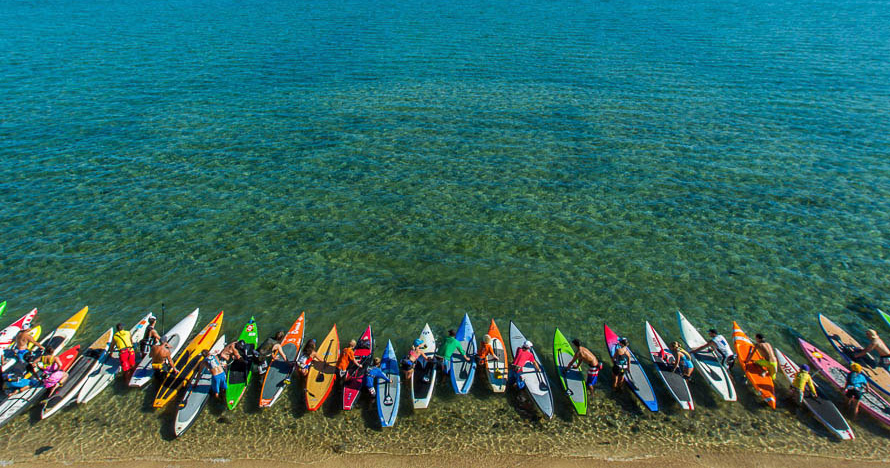
The Board Class Debate… Again: Four Scenarios For The Future Of SUP Racing
Boss Man’s note: This is a guest post by Dr. Bryce Dyer, Senior Lecturer in Product Design at Bournemouth University in the UK. Much of his research relates to technology in sport and its implications, giving Bryce a unique perspective on the board class debate that he’s been following closely the past couple of years.
With the argument over 12’6 vs. 14′ vs. unlimited boards a seemingly never-ending saga, Bryce offered to give us an unbiased summary of the issues from his unique academic perspective, including four potential paths forward. A keen stand up paddler and racer, Bryce has no affiliation to any brands and, ideally, he would like to race in flat-water on a 23 foot long, twin hulled, reverse bow board without freaking everyone out…
The Board Class Debate… Again.
Guest post by Dr. Bryce Dyer
The board class debate has been going on for some time now. Last year, SUPAA caused widespread debate by proposing formalised design restrictions for SUP race boards. In addition, well known names such as Jim Terrell, Dave Kalama, Steve West and Larry Cain have all publicly weighed in on the subject, with as many differences in their opinions as there are similarities.
But while few paddlers can agree on specifics, the general feeling is that we currently have too many race board classes.
Controversy surrounding sports equipment isn’t unique to SUP though. Pretty much every sport that uses some degree of technology has been through similar dilemmas.
When scientists or academics have attempted to resolve these problems in the past (such as whether performance enhancing drugs should be legalised or whether Oscar Pistorius’ prosthetic legs were fair) the problem isn’t resolvable using data alone – it’s also driven by ethics and philosophy. This makes it challenging as ethics are inherently relative – we all have our own views with nobody being exclusively right or wrong.
So then, should we scrap the 14 footer or the 12’6? Or do we remove both and create a whole new board class to replace them? Or perhaps we try abolishing any restrictions altogether?
With my background in research on the implications of technology in sport, I’m going to present four different scenarios with four different underlying principles as to how SUP racing could move forward, including the challenges involved with each.
These are four of the many possible directions the sport could go in:
– Move towards “One Design” racing
– Abolish all restrictions and create truly unlimited racing
– Create an entirely new board class that replaces both the 12’6 and 14′
– Phase out either the 12’6 or the 14′ and focus on the other
Let’s take a closer look at each option…
The Case For A “One Design” Board Class
Would having a fixed board design be the fairest solution for the sport of SUP racing? Some dinghy sailing classes (such as the Laser) are ‘one design’ in nature. This means every boat in the race is made to the exact same specifications, which ensures that differences in speed and performance comes down to the skill of the sailor, not the design of the boat.
The most obvious downside of implementing this principle in SUP racing would be that many board manufacturers would struggle to remain interested as their ongoing sales would be impacted. A board manufacturer would have to rely exclusively on any increases at the sport’s recreational (and surfing) level to drive their business.
In addition there is Steve West’s point that, due to weight differences in paddlers, the effective waterline length of two identical boards isn’t actually the same anyway. Take two boards of the same length but stick two paddlers of different weights on them and the same issue arises that we’re trying to resolve. The boards technically won’t be the same length because they will have different waterlines (which directly influences a board’s speed). As a result, the idea of one design racing isn’t really as equal (and therefore as ‘fair’) as it first appears.
On this basis, I would suggest that one design racing is not a way to level the playing field, nor is it in anyone’s best interests.
One Design Board Class? No.
The Case for Unrestricted Race Board Development
Taking things in the completely opposite direction, how about entirely removing board class length restrictions (and any other limits) and moving towards truly unlimited racing?
Jim Terrell and Larry Cain’s counter point of view was that any lack of restriction in SUP board length and width would ultimately harm the sport, as SUP racing, at least the flat water side of it, would risk becoming a question of simply how well paddlers can balance on ultra-narrow, futuristic and very expensive designs.
The sport would then become less accessible at the grassroots and novice levels, which is an incredibly important area for any sport in its infancy.
Any further narrowing in boards below today’s approximate minimum of 23 inches would create what is known in sports ethics discussions as reskilling. This would mean that, everything else being equal, the board with the narrower width would be the fastest option, and the sport would evolve towards simply being a competition of who could balance the best.
The sport would fundamentally change and it would suddenly suit very different types of athletes.
SUP racing would not be the first sport to fundamentally change though. For example when Dick Fosbury created a new technique for doing high jump in the 1960s, this radical change suddenly gave an advantage to a different set of athletes and therefore changed the very nature of the sport. Proverbially speaking, your apples have then become oranges.
Alternatively we could take the opposite approach and see the deskilling of SUP race boards, i.e. enforcing a minimum width that is greater than the current 23 inches and therefore more stable to use in all conditions by more paddlers. This could be a radically different way to approach board regulations and would accommodate more types of athletes.
However, as Larry Cain has reflected, there are limits to who we should reasonably accommodate on a race board. We can’t accommodate everybody.
At 93kg (205lbs) and 6ft 3 inches (190cm), I’m personally never going to win the Tour de France. Likewise, basketball nets aren’t being lowered to make the sport more inclusive of shorter people – being tall is just plain and simply an advantage in that sport. Perhaps being small (or big) is simply just an advantage that we have to accept in our sport.
But while the sport cannot be expected to cater for everyone, I believe we do need race board designs to cover the expectations of the typical paddler. I believe Cain was right when he proposed that we should be concerned about the masses, not so much the elites (which are far fewer in number).
In ethical terms it’s what called a utilitarian approach – you consider the outcome of a moral dilemma and then determine that the right course of action is the one that provides the greatest good for the greatest number of people.
Secondly, the pursuit of speed for speed’s sake isn’t a strong enough argument to justify enforcing a particular board class, as board speeds are relative, not absolute. For example, when the material of poles in pole-vaulting switched from metals to composites in the 1950s, everyone went higher but the same people still won. Performance improved but the true value of the change was meaningless, as the results (i.e. the winners) were still the same.
Finally, as exciting as unrestricted board design would be for me personally, in the end cost would become a negative factor.
There was much criticism leveled at the Great Britain cycling team during the Beijing Olympic Games in 2008. The team used a large financial investment to produce customised bikes that were unavailable for sale commercially, while also using high-performance tools such as wind tunnel testing. Other nations simply couldn’t afford to compete at that level.
In cycling, approximately 70-90% of the resistance in moving forward is aerodynamic drag, so if you don’t pay the (big) money to try and minimise this, you’re just not going to win the prizes.
So if we allow board development to be truly unlimited and spiral out of control, then success in SUP racing would be influenced by how much money a paddler could throw at it. The sport might see participation levels massively impacted, as those who feel unable to compete will simply walk away, while those who do stay would be justifying the board brands charging higher prices as technology progresses.
With all of this in mind, while unlimited board design alone is the simplest resolution to this board class debate (and, contrary to my arguments, this would actually be my own personal preference), it is unlikely to be in the sport’s best interests.
Unrestricted Race Boards? No.
The Case For An Entirely New Board Class
Jim Terrell took a novel stance last year by proposing we could phase out both the 12’6 and 14′ board classes entirely, and phase in a new standard board length based upon a principle of fairness (he proposed 4 metres in length).
This is perfectly reasonable at first glance and has happened several times before in Olympic sailing classes. On occasion, one sailing class is deleted and replaced with a new one. Often the same sailors impacted by this change would reappear in the new class at the next Olympics anyway.
However, this idea is profoundly unfair to amateur athletes who are buying their own equipment.
The big flaw with Jim’s proposal is that not only does it invalidate the entire (and established) race board market (flooding the second-hand market with loads of illegal or inferior boards that won’t sell easily), his argument also works from the premise that proponents of both board classes would somehow be happy with a middle ground established between them.
But this whole board class debate isn’t a war of two local football teams that you have to choose between. That is, we’re not emotionally attached to either board class because of its specific length. For the most part, this whole debate is purely about two totally arbitrary numbers. I would suggest our greater emotional attachments are to our wallet and our ability to do well in a race – not the arbitrary number that signifies our board’s length.
As Jim suggests, you could race 12’6 boards in this new 4 metre class and 14 footers in the unlimited divisions. That’s only a temporary compromise though and still likely to result in a mass eBay board selling binge as soon as the new class starts being phased in.
The stress caused by removing two board classes could be greatly reduced by simply selecting one or the other, i.e. choosing either 12’6 or 14′ as the main board class and phasing out the other. This would only upset half of the fleet rather than all of it.
Either way, there is no empirical evidence that a 4 metre class (or any other length) is better than any class we already have. Plus, whilst some experts anecdotally claim one length isn’t suitable for the bigger/smaller athlete, I’d personally want to see the actual data before drawing any conclusions.
Choosing a new middle ground is fundamentally going to upset everyone (other than perhaps the sponsored pros who get all their boards for free). On this basis, I would argue this idea isn’t a worthwhile solution either.
Entirely New Board Class? No.
The Case For Removing Either The 14′ Or 12’6 Board Class
If none of the above options are viable, how about simply phasing out one of our current two main board classes and focusing solely on the other?
There are several arguments for and against our current board classes.
An argument proposed by Steve West is that both 12’6 and 14′ board lengths are arbitrary in origin and not grounded in science, so we should not necessarily choose either as the standard.
As a scientist myself, I do wince a little when being dictated on how a board should look based upon nothing more than historical circumstance. As has been recounted by several people before, the 12’6 standard only came about due to the (then) availability of foam blanks. There was no performance or optimisation considerations in choosing the 12’6 length (or 14′ for that matter).
However, an arbitrary-based origin of equipment is actually quite typical across many sports. For example, the standard 700c bicycle wheel was a product of natural selection, not optimisation. I believe Steve’s opinion is ethically sound but isn’t practical, as there is no data available to suggest what size would be ‘better’ than either 12’6 or 14. And I don’t expect we’ll have that data any time soon.
A board and its paddler is a highly complex system and there are just too many variables to account for. It is unlikely anyone outside of academia will have any motivation to pursue such an in-depth riddle, so we may never know what the “optimum” board length really is. Therefore 12’6 or 14′ is just as good as any other arbitrary length, and if we’re choosing just one board class then we might as well select an existing option to minimise other issues.
An argument often given in favour of the 12’6 class regards the ease of air travel, however this is flawed. Only a very small percentage of competitors actually fly with their boards to a race. Plus, as Jim Terrell has remarked, other water sports have handled international travel adequately in the past.
So maintaining the 12’6 class purely for “ease of travel” is allowing the needs of the few to dictate the performance of the majority. I would personally ignore the travel argument entirely.
Instead, I would be asking the experts if the 14′ class is fundamentally more inclusive to a wider range of skill levels and body weights than the 12’6. Or in other words, does the shorter length of a 12’6 penalise bigger paddlers?
If it can be shown that the 14′ can accommodate more paddlers at all levels and sizes, then just drop the 12’6 and focus on the more inclusive board class.
However, if any difference shown is only marginal, and/or if transit and storage really is an issue (and if the typical paddler isn’t going to be penalised by stepping down to a 12’6) then just drop the 14 class.
Either way, a proper, unbiased, stakeholder evaluation is needed to really produce the answer to this question.
Remove Either The 12’6 Or 14? Perhaps…
So What Now?
Whichever way the sport goes, the greatest barrier to any resolution of the ‘board class debate’ is not the boards themselves but the lack of any dominant governance of the sport: Stand Up Paddling simply has no international governing body.
Controversy struck tennis in the 1970s when ‘spaghetti strung’ rackets temporarily deskilled the game by increasing both strike power and the size of a racket’s sweet spot. However the resolution in this case was simple: The governing body of tennis evaluated the issue and dealt with it quickly by simply outlawing it.
But when a problem arises in SUP (such as with this whole board class debate or any other future issue), there is no way to quickly resolve it as there is no authoritative governing body.
The fact that SUP currently has several voices but no single, dominant ‘hound in the pound’ means that all of this debate about board classes is irrelevant. In the short term there can be no solution unless someone owns the problem.
Therefore, the best step forward the sport can make in my view is to have a definitive governing body established. Once that is done, this governing body would then perform a fair and unbiased stakeholder analysis to find a fair solution and keep everyone (literally) on board.



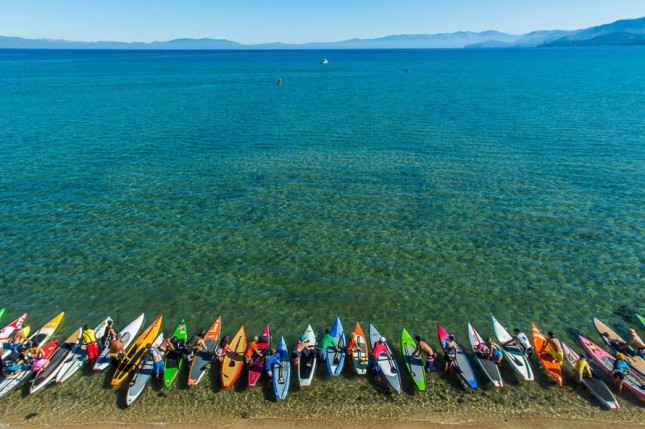
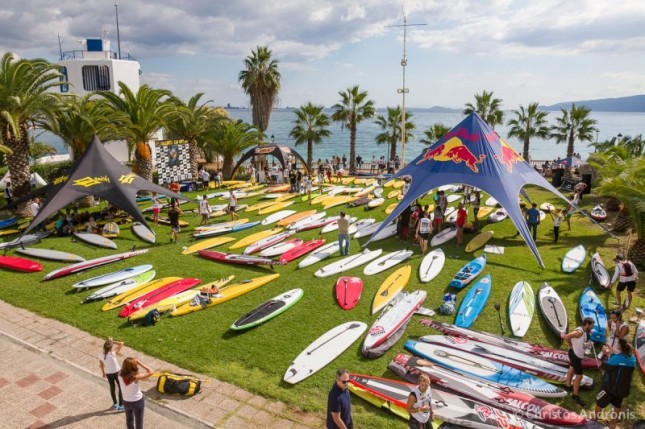
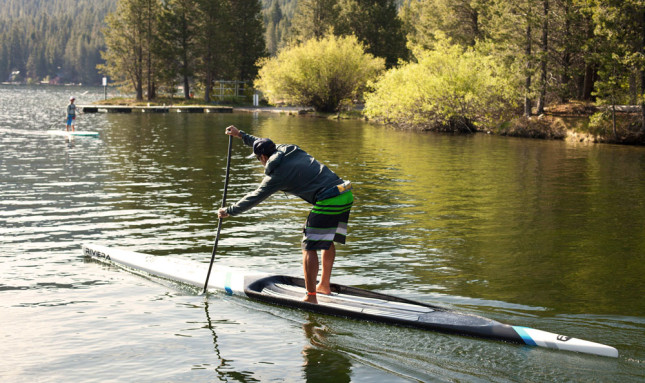
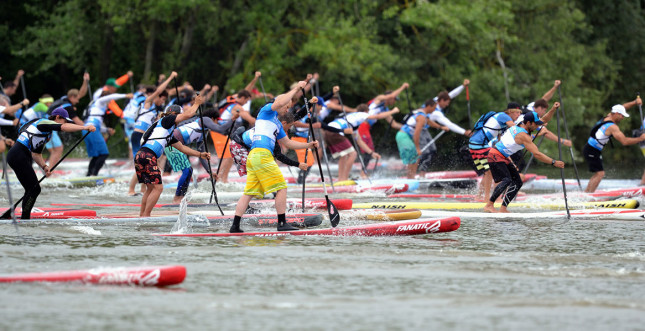
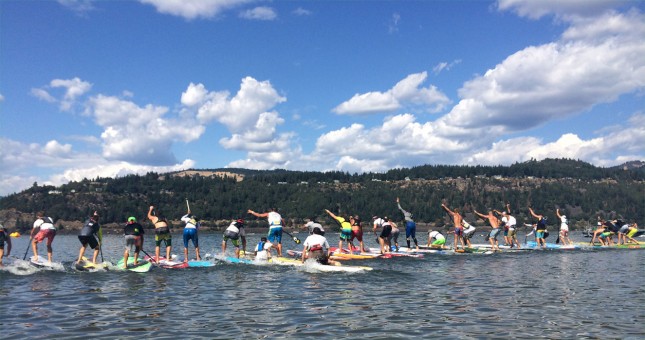
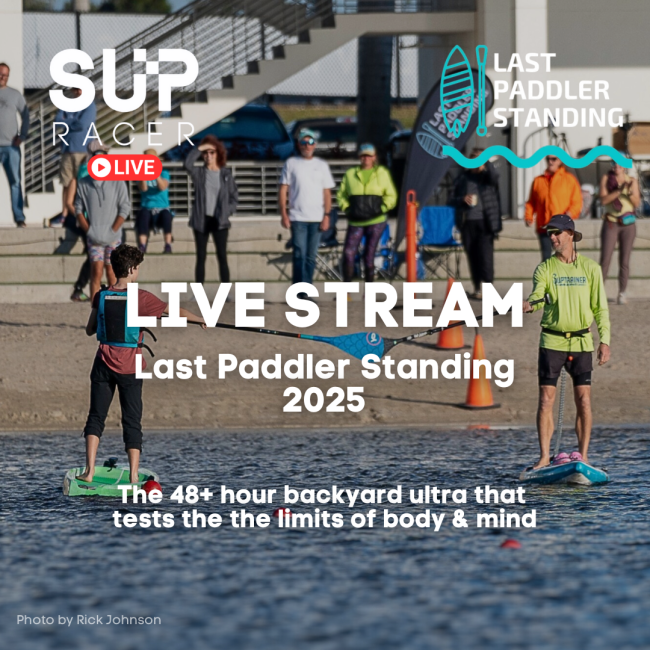
You must be logged in to post a comment.